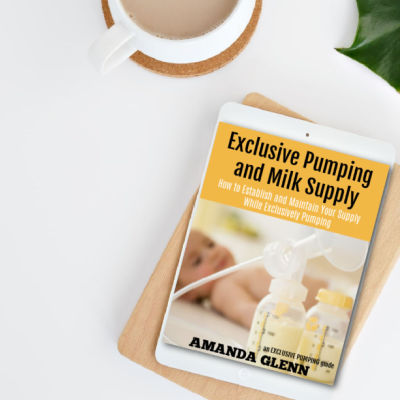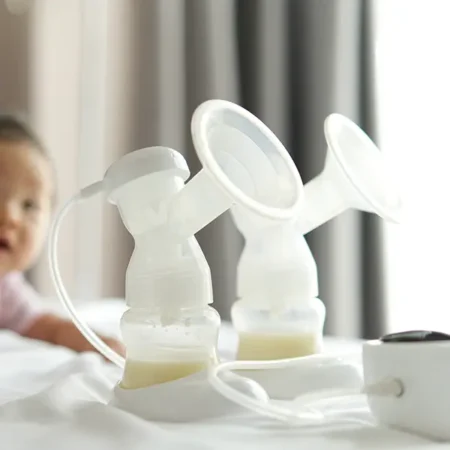You might have heard that a baby is more effective than a breast pump. What does this mean, and is it always true? Let’s break down pumping vs nursing output, and cases when a baby may not be more efficient than a pump.

This post may contain affiliate links, which means if you click a link and purchase something, I may make a small commission at no additional cost to you. I only recommend products I love! More information here.
What does it mean for a baby to be more effective than a pump?
Here is a common scenario: a new mother is planning to go back to work after maternity leave. Nursing is going great, and baby is growing well.
However, after that mother goes back to work, she struggles to pump as much milk as her baby takes in daycare, and she’s worried about her milk supply.
In this case, a lactation consultant might tell the mom, “There’s nothing wrong with your milk supply. A breast pump can’t be as effective as a baby.”
And in this case, this is likely true! Many women don’t seem to respond as well to a breast pump as they do to their baby nursing, so they have a higher nursing vs pumping output.
Even though the milk is THERE, in her breasts, she struggles to remove it.
In this case, the problem is more about milk removal than milk supply.
Is it always true that a baby is more effective than a pump?
Many exclusive pumpers have heard that it’s not possible to pump as much as a baby would nurse, and they worry that they won’t be able to keep up their milk supply.
So is it true that a pump is always less effective that a baby?
No. It’s true for many, or even most, mom and baby pairs, but not all.
A lot depends on how well the mother responds to the breast pump. Some mothers struggle, as discussed above. But many do not, and are able to pump as much as or more than if they were nursing.
As an example of what I mean: When I exclusively pumped for my son, I responded very well to my breast pump, and my output ranged from 45-50oz per day. But when I nursed my daughters, my supply was lower, because they ate closer to 30-35oz per day and my supply was in sync with their intake.
My supply was higher with just a pump than it was with nursing, because the demand was higher from my pump when I was exclusively pumping than it was with my babies when I was nursing.
Additionally, some babies struggle with nursing for whatever reason. A baby might have a tongue tie or might have a difficult time transferring milk. In cases like this, a breast pump CAN be as effective or more effective at removing milk than a baby, especially when the mother responds well to her pump.
Need help with exclusive pumping? Use EPUMP30 for 30% off
So what can you do if your body doesn’t respond well to the pump?
Here are some ideas that might help if your nursing output is higher than your pumping output, or if you’re an exclusive pumper with lower milk supply.
Are you struggling to get letdowns?
First, consider whether the issue might be that your milk is taking a long time to let down when you pump, or whether it’s not letting down at all.
Milk doesn’t always come out of your breasts – usually your baby or your breast pump stimulates it. (Obviously, leaks are a thing, but most of the time, milk stays in your breasts unless you’re trying to nurse or pump.)
When milk starts flowing (you might see it start to spray after it’s been dribbling out), that’s a letdown.
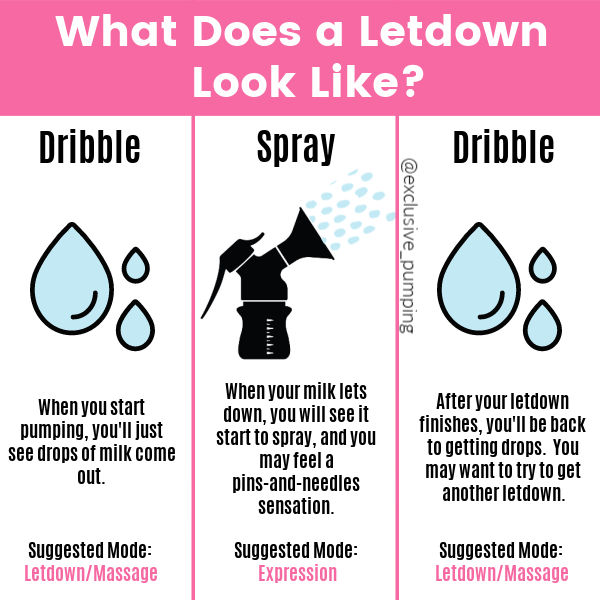
Letdown is a conditioned response, which means your brain tells your milk to let down when your body senses things that normally precede breastfeeding. For a nursing mom, that could be a crying baby or baby’s touch. For a pumping mom, it could be the sound of her breast pump.
If you’re struggling to get letdowns, the issue could be that that sensory input isn’t there. Below are a few things that you can try.
Replicate the conditioned response
Try to replicate the same environment each time you nurse or pump.
If you’re a nursing mom and need to pump, bring a video of your baby nursing or a piece of clothing that smells like her. If you’re exclusively pumping, do the same routine each time before you pump.
Try hand expression
Some people respond better to hand expression. Try it to see if you’re better able to get a letdown that way versus your pump’s massage mode.
Try a manual pump

For some reason, some women respond better to manual pumps.
Try a manual pump if you usually use an electric one.
Try vibration

You can see if using an electric toothbrush (or whatever you have in your house that vibrates) on your breasts helps you get a letdown faster. If that works, you may want to invest in a lactation massager.
(*Note: LaVie makes two lactation massagers – a smaller one with just vibration and a warming massager that has heat AND vibration. They are both super helpful – use the code EPUMP on their website for 10% off!)
Is your milk letting down okay, but you’re just not pumping that much milk?
For some people, the issue isn’t getting a letdown, but just that they don’t seem to pump as much milk in a session as their baby will want from the bottle.
Below are a few things that you might try if this is the case for you.
Consider replacing your pump parts
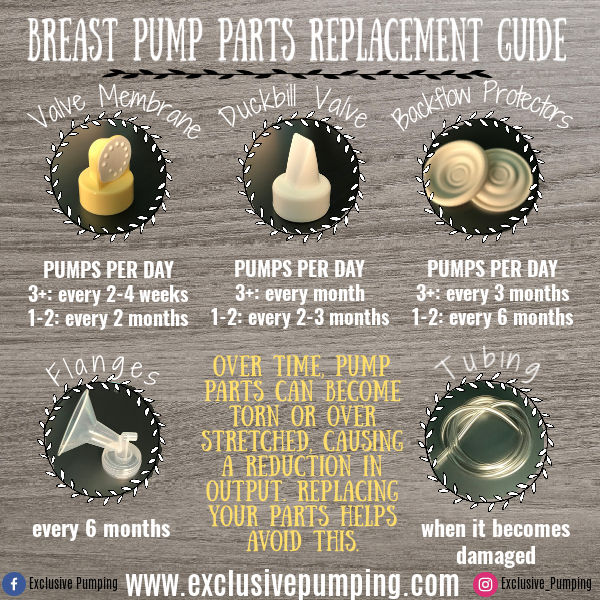
Try replacing your pump parts if it’s been a while. They wear out and can start working less well over time.
Try hand expression or a manual pump
If you finish a pumping session but feel like you still have milk, try hand expression. Some women are able to get to “empty” better by hand expressing for five minutes after pumping.
Also, as described above, see if you can get better results with a manual pump.
Try different settings
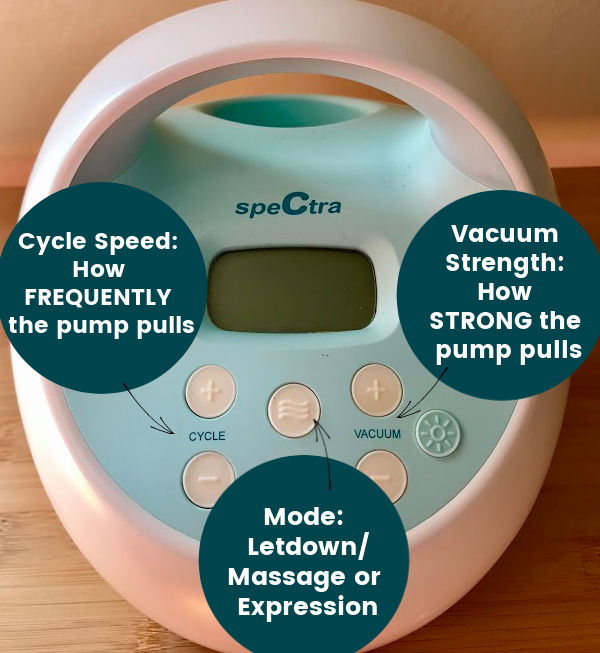
Experiment with different speeds and vacuum strength. You want to set the vacuum to the highest setting that is comfortable for you.
Check your breast shields
Make sure you have the correct size breast shields for you. This might be different than the ones that came standard with your pump!
Make sure your sessions are long enough
Finally, make sure you’re pumping for long enough. You want to pump long enough that you are able to finish one letdown (so the milk starts spraying and then slows to a dribble) and possibly get another one (where it starts spraying again).
This means that if your milk stops spraying after 8 minutes, you might want to keep pumping for another 10 minutes or so to see if you can get another letdown – your breasts aren’t empty, and there’s still at least a little milk in there.
Hopefully some of these tricks will help your body respond better to the pump so you can pump the same amount that your baby takes when nursing.
What has your experience been with pumping vs nursing output? Is your baby more effective than your pump? Share your experience in the comments!

